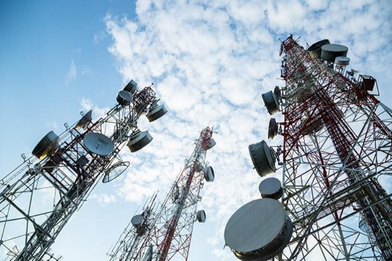India’s telecommunications network is the second largest in terms of telephone users after China. It boasts one of the lowest call rates in the world due to fierce competition between giant telecom companies. Among the world’s top 10 Internet users, India has the second-largest broadband subscribers with 747.41 million.
The Indian Telegraph Act, of 1885 serves as the foundation for the sector’s current regulatory structure. Since the development of the “telegraph,” the nature of communication, its applications, and technologies have changed significantly.
To repeal regulations from the British era that regulate the telecom industry, the Department of Telecommunications (DoT) released the draft Indian Telecommunication Bill, 2022. It aims to implement significant changes in the way the telecom sector is managed by granting the Centre more authority in several areas.
The Indian Telecommunication Bill, 2022, consolidates and alters the current laws governing telecom services, networks, and infrastructure, as well as spectrum allocation. The draft bill was released on September 21, 2022
The new Bill has proposed expanding the definition of “telecommunication services” to encompass OTT services, satellite-based communication services, internet-based communication services, in-flight and maritime connection services, interpersonal communications services, and machine-to-machine communication services.
Indian Telecommunication Bill, 2022’s explanatory note states that the Centre believes India needs a legislative system that is in tune with the realities of the twenty-first century. Additionally, the bill advocates for several reforms, such as softer merger and acquisition standards and the ability of the government to waive debts for financially distressed telcos.
The proposed Indian Telecommunication Bill 2022 will bring about several reforms, such as a distinct set of guidelines to handle insolvency for financially troubled telecom assets, softer merger and acquisition restrictions, and the ability of the Centre to waive off debts for operators.
Currently, Insolvency and banking Insolvency codes are not understandable.
it was unclear whether the spectrum owned by the failing operator belonged to the Centre or whether banks could seize it, insolvency proceedings under the IBC did not fare well. Since spectrum is a public resource and the government owns it, according to DoT, it cannot be sold by banks as part of an insolvency proceeding. The struggling operator will continue to be the owner of the licence and spectrum under the new structure as long as it continues to offer services and make government dues payments. Additionally, if the operator’s services are discontinued, the spectrum will be returned to the government.
To simplify the process and make it comprehendible, the new bill will provide the government ownership of spectrum if a telecom provider files for bankruptcy. The Centre may amend the Telecom Regulatory Authority of India Act (TRAI Act) to lessen the industry watchdog’s role as a recommendatory body.
The telecom department must comply with the following requirements before granting a new license to a service provider the present TRAI Act to consult the regulator. The Draft Bill does not contain this clause. Additionally, it has eliminated the clause that allowed TRAI to ask the government for the data or documentation required to support its decision. The new Bill also seeks to do away with the need that the DoT to refer back recommendations for review by TRAI if it cannot accept them or if they need to be modified.
A draught Bill proposes renaming the Universal Service Obligation Fund (USOF) to the Telecommunication Development Fund (TDF). A portion of USOF’s funding comes from the profits of companies that provide telecom services. Money received through the TDF will be added to the Consolidated Fund of India and used to improve connectivity services across the country.
There are critics who are against changing USOF to TDF, including ASSOCHAM and the Internet and Mobile Association of India (IAMAI) who believe the current USOF should be reformed, They are advocating , for the suspension of the tax paid by telcos to the Universal Service Obligation Fund (USOF) until the presently available funds are depleted.
